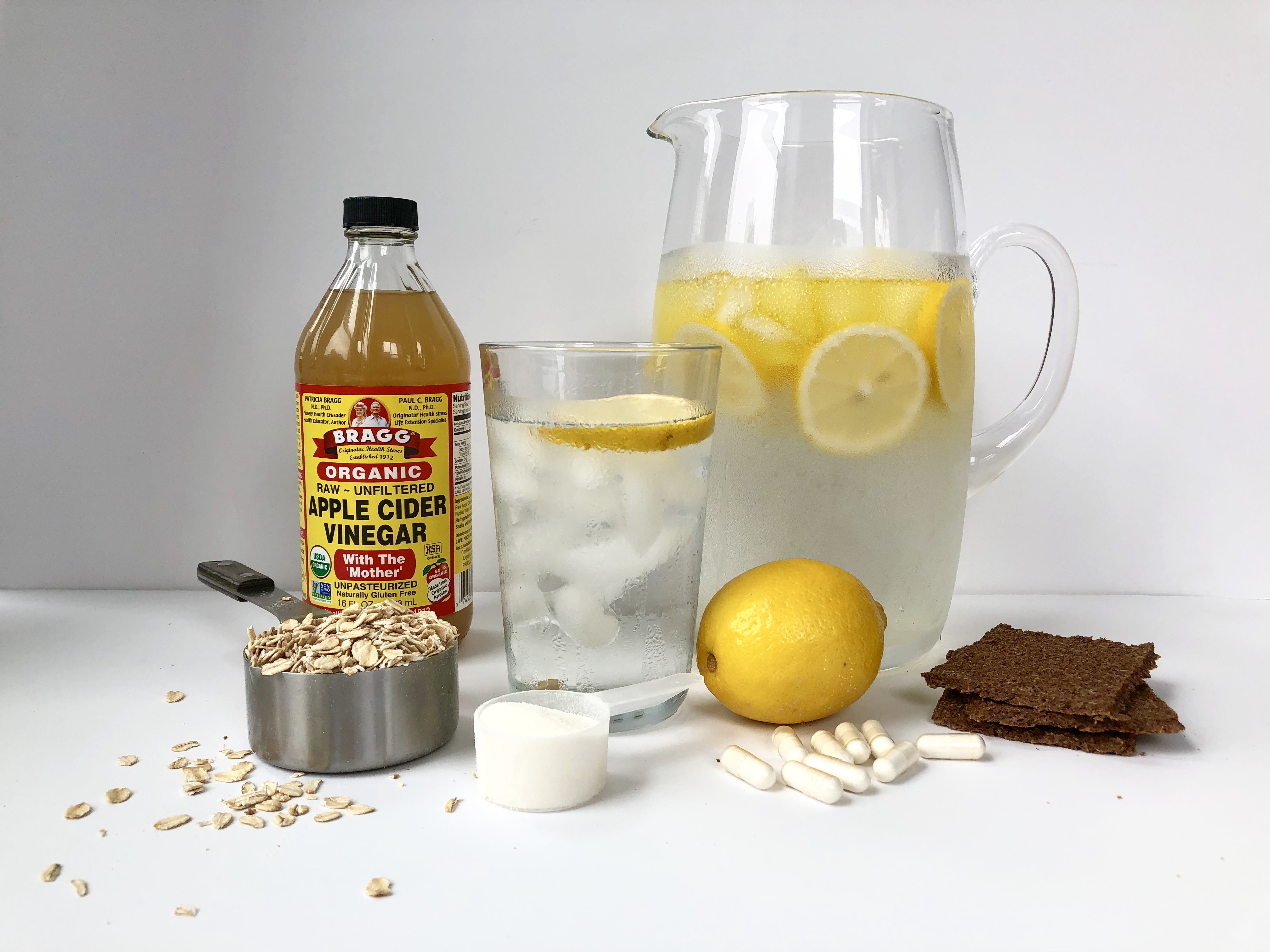Trending Now: Nutrition Facts and Fads
Nutrition and wellness trends are ubiquitous, and the list of new diets and superfoods seems to grow daily. We take pride in educating our clients on the science behind nutrition and love answering questions about nutrition news. Read along to learn about the hottest trends in nutrition and why they may or may not be helpful for you:

“Detox” Drinks: Lemon Water and Apple Cider Vinegar
With claims including anything from detoxification to aiding in digestion and balancing pH, we hear water mixed with lemon juice or apple cider vinegar can cure almost anything. Although it would be nice if these claims were true, unfortunately, there is no compound in either of these elixirs that can do much more than plain old water. Our bodies detoxify any impurities from our system very completely, thanks to the kidneys and liver. Additionally, although lemon juice and apple cider vinegar are acidic foods, it is nearly impossible for us to impact our overall pH, as it is kept in very tight regulation through the respiratory and renal systems. Small changes in pH are regulated and adjusted accordingly through these precise systems, and something like a small amount of lemon juice or apple cider vinegar does not create any significant effect. Luckily, however, if you enjoy the flavor of lemon juice or apple cider vinegar in your water, then drink up! This will help you stay hydrated and the added flavor may keep you reaching for water more often.
Probiotics
Probiotics have gained popularity recently, and although there are several health benefits associated with probiotics for GI disorders, the research on their effects beyond the GI tract are still not well understood. However, if interested in using probiotics for gut health purposes, it is important to remember not all probiotics are created equal. While many foods and supplements are now adding probiotics to their products, many of these do not provide the same benefits as the prescription-grade options. When choosing a probiotic, it is important to speak with your gastroenterologist or registered dietitian first, as each probiotic should be selected to treat specific symptoms. Overall, when choosing any probiotic, ideally the bottle should be labeled with the following:
- Genus, species and strain
- Minimum viable numbers of each probiotic strain at the end of the product’s shelf life
- Suggested dosage
- Proper storage conditions for the product
Fiber
High fiber diets have recently made a comeback in the weight loss world. It is no secret that we love high fiber foods, as they keep us fuller for a longer amount of time, but the health implications go well beyond weight loss. As the indigestible portion of a carbohydrate, fiber also acts like a sponge in our GI tract and helps absorb excess fat, cholesterol and sugar, and therefore, naturally steadies blood glucose and decreases cholesterol. Additionally, fiber aids in GI health by promoting regular bowel movements. Although eating more fiber may not sound like the most exciting way to create a healthier diet, this diet trend is completely FEED-approved!
Collagen Supplements
Supplements come in many forms and the latest supplement trend combines both nutrition and beauty claims by way of collagen. Collagen supplements are seemingly everywhere lately, and although these powders and pills may claim to be the solution for several health and skincare needs, the research is not as convincing. Collagen is a protein found in the body’s muscles, bones and connective tissues, and sadly, after the age of 30, we do not produce as much collagen as we did in our younger years. Like all protein, collagen is made of building blocks called amino acids, which serve a variety of purposes throughout the body. Once ingested, collagen and all other proteins we consume are broken down and metabolized into these individual amino acids. As such, it isn’t possible for the large collagen molecule to be absorbed as a whole and sent to the skin. Although collagen is a great source of protein, it is important to take claims into consideration and know these amino acids can be found in many other protein-rich foods, too.